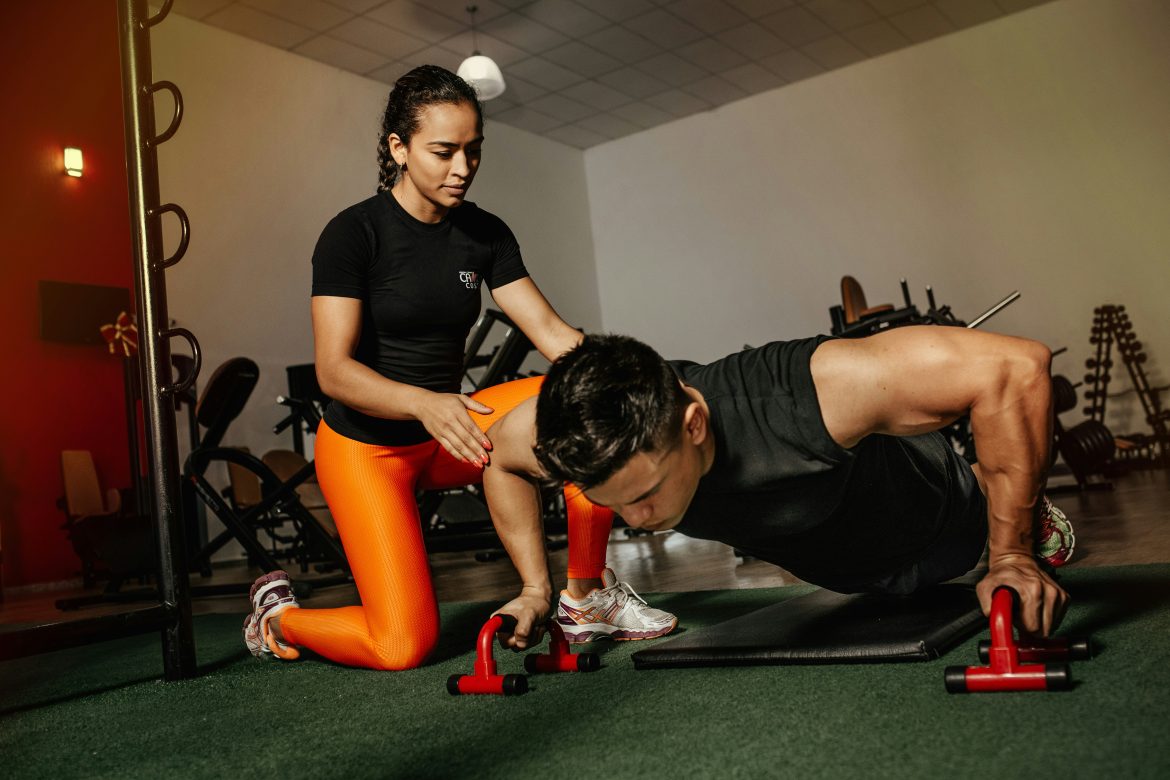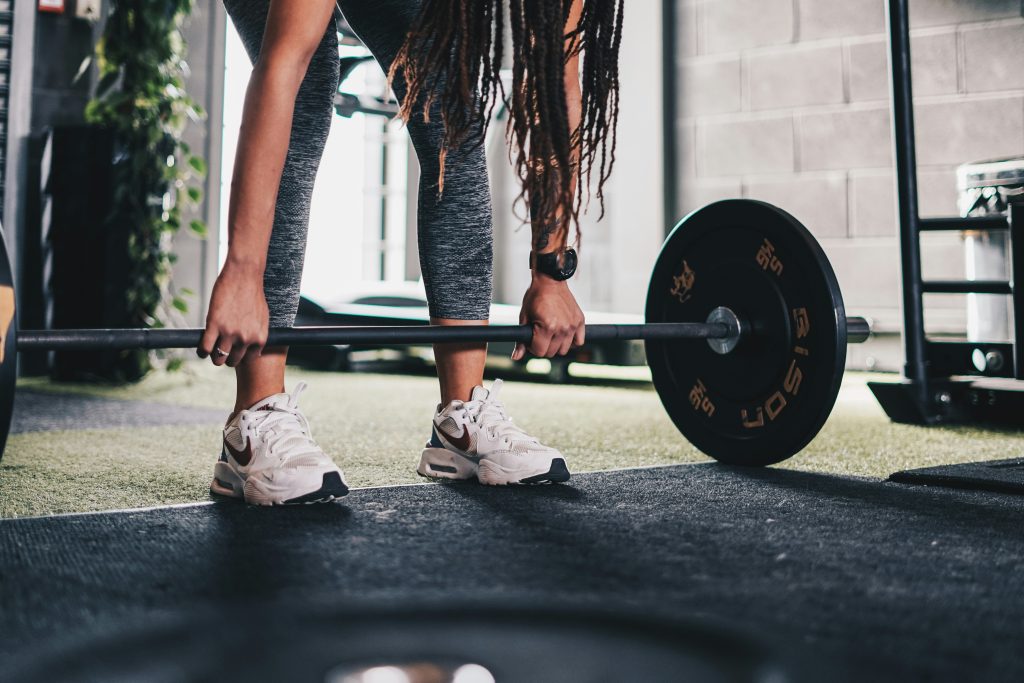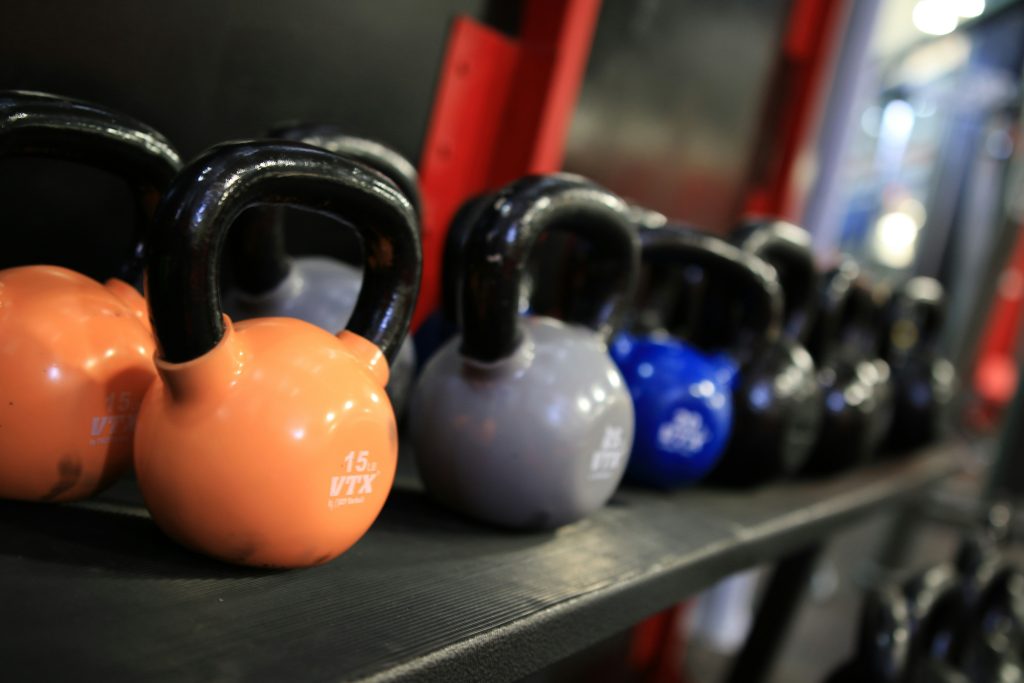With an array of information available, it’s crucial to have access to a reliable and structured guide. This article aims to fill that gap by providing well-researched, practical information. It brings together essential components of starting a fitness routine, ensuring that beginners have a smooth and informed start.
“A surprising fact: Consistent physical activity can increase life expectancy by up to 4.5 years, even when initiated later in life.”
This guide details several crucial topics, each one offering valuable insights and actionable advice to assist beginners in laying a solid foundation for their fitness journey:
- Beginner Workouts: Getting Started – This section introduces various types of workouts suitable for beginners, emphasizing the importance of selecting the right exercise based on individual fitness levels and goals. It highlights the need for setting realistic goals and adopting practices to prevent injuries, ensuring a safe and sustainable approach to fitness.
- Essential Workout Gear – Understanding the importance of the right gear is fundamental for a successful fitness routine. This segment provides guidance on selecting appropriate gear, emphasizing comfort and safety. It also offers tips on finding high-quality, cost-effective options for those on a budget.
- Nutrition for Fitness Beginners – Proper nutrition is a cornerstone of any fitness plan. This part of the guide breaks down basic nutrition principles, emphasizing the role of balanced diets and hydration in enhancing workout performance and recovery.
- Creating a Balanced Fitness Plan – A comprehensive fitness plan goes beyond random workouts. This section focuses on structuring a balanced routine, incorporating various types of exercises, understanding the importance of rest days, and tracking progress for continuous improvement.
- Staying Motivated and Consistent – Maintaining motivation and consistency can be challenging. This segment provides strategies to overcome common obstacles, setting achievable goals, and leveraging community support to stay on track with fitness goals.
As you proceed with this guide, you’ll gain access to well-structured and detailed information that aims to support you in starting and maintaining a healthy and active lifestyle. The sections are designed to equip you with the knowledge and confidence needed to navigate the initial phase of your fitness journey successfully. This guide is not just about exercises and routines; it’s a comprehensive approach to embracing a healthier and more active life.
Beginner Workouts: Getting Started
Starting a fitness routine is a significant move towards better health and an improved lifestyle. For those new to fitness, it’s crucial to understand various workout options and the best practices for a safe and effective routine. This section, “Beginner Workouts: Getting Started,” provides an in-depth analysis of workout types ideal for beginners, strategies for setting attainable fitness goals, and essential tips for preventing injuries.
Workout Types for Beginners
Choosing the right type of workout is critical for beginners. Cardiovascular exercises like walking, jogging, or cycling are recommended for enhancing heart health and stamina. Strength training, which can be initiated with light weights or body-weight exercises, is effective for muscle building and boosting metabolism. Flexibility-focused activities, such as yoga or Pilates, are essential for muscle and joint health.
- Personal Enjoyment: Engage in activities that you find enjoyable to maintain motivation.
- Fitness Level: Select exercises that align with your current fitness level to avoid injuries.
- Available Resources: Choose workouts that can be performed with the equipment and space you have.
“Did you know? Adults who engage in at least 150 minutes of moderate-intensity exercise weekly are 33% less likely to suffer from all-cause mortality compared to inactive individuals.”
Setting Realistic Goals
Setting achievable fitness goals is crucial for maintaining motivation and measuring progress. Beginners should assess their current fitness levels and establish short-term, attainable goals. Examples include walking for a specified duration daily, attending a certain number of fitness classes weekly, or mastering a set number of exercises.
The SMART (Specific, Measurable, Achievable, Relevant, Time-bound) framework is highly effective for goal setting in fitness. A SMART goal transforms a general ambition like “get fit” into a precise target such as “to jog for 20 minutes without stopping in three months.” This approach makes the goal specific, measurable, achievable, relevant, and time-bound. Regularly reviewing and adjusting these goals is essential for sustained motivation and success.
Injury Prevention
Preventing injuries is paramount for beginners starting a fitness routine. A proper warm-up should precede every workout session to increase blood flow to the muscles, reduce stiffness, and prepare the body for physical exertion. Concluding each session with a cool-down helps in gradually lowering the heart rate and aids muscle recovery.
Attention to form and technique during workouts is critical to prevent strain and injuries. Beginners should seek guidance from certified fitness instructors if unsure about executing any exercise correctly. Listening to the body is also crucial; pain or discomfort beyond the typical muscle ‘burn’ indicates the need to rest. Integrating rest and recovery days into the fitness routine is essential to avoid overtraining and the associated risk of injuries.
Essential Workout Gear
Choosing appropriate workout gear is crucial for ensuring a comfortable, functional, and safe exercise routine. This section, “Essential Workout Gear,” provides comprehensive insights into selecting the appropriate gear, understanding its critical role in your fitness regimen, and identifying options that accommodate different budgets without compromising quality or performance.
Gear Selection
Selecting suitable workout gear is essential for a comfortable and effective exercise session. The type of gear required varies with the exercise. For cardiovascular activities like running or cycling, shoes with adequate support and cushioning are essential. In contrast, strength training may require supportive footwear and gloves for enhanced grip and hand protection. Clothing should be breathable and moisture-wicking to maintain comfort and dryness during workouts. Additionally, the fit of workout attire should be appropriate – not too tight to restrict movement or too loose to become a nuisance or safety hazard during exercises.
Importance of Proper Gear
The significance of proper workout gear extends beyond mere comfort, playing a vital role in enhancing performance and preventing injuries. For instance, the right footwear provides necessary support to feet and ankles, thereby reducing the risk of injuries. Using correct weights and equipment in strength training is crucial for effective muscle work without undue strain.
“An interesting fact: Research indicates that wearing the right workout attire can increase performance by up to 15%, largely due to psychological and physiological benefits.”
Proper workout attire can also positively impact your mindset, boosting confidence and motivation for exercising. Feeling professional and prepared can significantly enhance your focus and dedication during workout sessions.
Budget-Friendly Options
Quality workout gear need not be expensive. There are ample budget-friendly options that do not compromise on quality or performance. Strategies for finding affordable workout equipment include shopping for off-season items to enjoy discounts, comparing prices online, and considering gently used gear. Many brands offer high-quality basics that are durable and functional without the extra cost of luxury branding. Additionally, some local sports stores may offer discounts on last season’s gear or bulk purchases.
| Strategy | Description |
|---|---|
| Shop Off-Season | Purchase items when demand is low to enjoy discounts. |
| Compare Prices Online | Use online platforms to find the best deals. |
| Buy Gently Used Gear | Consider second-hand items that are still in good condition. |
Nutrition for Fitness Beginners
Proper nutrition plays a pivotal role in achieving fitness goals, providing the necessary energy and nutrients for performance enhancement and post-exercise recovery. This section, “Nutrition for Fitness Beginners,” emphasizes the foundational knowledge of nutrition, highlights the strategic timing and composition of pre and post-workout meals, and discusses the integral role of hydration in maintaining optimal fitness performance.
Basic Nutrition Principles
A balanced diet, rich in a variety of nutrients, is essential for supporting bodily functions, promoting health, and aiding in workout recovery. Proteins are crucial for muscle repair and growth, carbohydrates serve as the primary energy source for workouts, and fats are essential for hormone production and overall health. Additionally, vitamins and minerals are vital for metabolic processes and recovery post-exercise.
Balancing these nutrients and tailoring intake to individual fitness goals and workout intensities is critical. For instance, individuals focusing on strength training might require an increased protein intake to support muscle repair, whereas those engaged in endurance training might benefit from a higher carbohydrate intake to maintain energy levels.
“Interesting fact: Athletes may require up to 10% more proteins than sedentary individuals to support muscle repair and growth post-exercise.”
Pre and Post Workout Meals
The timing and composition of pre and post-workout meals are key factors in maximizing fitness performance and optimizing recovery. Pre-workout nutrition should primarily provide energy and maintain hydration. Meals rich in carbohydrates, moderate in protein, and low in fat, consumed 1-3 hours before exercise, are recommended to fuel the body and minimize discomfort during physical activity.
Post-workout nutrition focuses on recovery and replenishing the body’s resources. A combination of protein and carbohydrates consumed within the optimal 45-minute window post-exercise can maximize muscle repair and glycogen replenishment. This strategic nutrition timing is crucial for reducing muscle soreness and enhancing recovery, preparing the body for subsequent workouts.
Hydration and Fitness
Hydration is a critical component of fitness, impacting both performance and recovery. Proper fluid intake is essential for maintaining blood volume, regulating body temperature, and ensuring muscle and joint functionality. Fluid loss through sweat during exercise necessitates adequate fluid consumption before, during, and after workouts to maintain hydration levels.
Key Hydration Tips for Fitness:
- Pre-Workout: Drink 17-20 ounces of water 2-3 hours before exercising.
- During Workout: Consume 7-10 ounces of water every 10-20 minutes during exercise.
- Post-Workout: Replenish fluids by drinking 16-24 ounces of water for every pound lost during exercise.
Monitoring hydration status by observing the color of urine (aiming for a light yellow color) and responding to thirst cues is essential for ensuring adequate hydration.
Creating a Balanced Fitness Plan
Developing a balanced fitness plan is essential for reaching and maintaining optimal health and fitness levels. This section, “Creating a Balanced Fitness Plan,” focuses on the strategic organization of workouts, highlights the critical nature of rest days, and discusses the importance of monitoring progress for continuous improvement and success in your fitness endeavors.
Structuring Workouts
An effective workout routine involves a mix of various exercise types to ensure comprehensive development and prevent imbalances. Cardiovascular exercises are vital for heart health and stamina, strength training is essential for muscle building and metabolic enhancement, and flexibility exercises aid in muscle and joint health.
To maximize the benefits of your fitness routine, align your workouts with your specific goals, such as weight loss, muscle building, or endurance enhancement. Diversifying your workout types helps avoid repetitive stress on specific muscle groups and maintains engagement and motivation.
Importance of Rest Days
Incorporating rest days into your fitness plan is vital for muscle recovery, injury prevention, and overall well-being. Rest days allow your body to repair and strengthen itself after workouts. Neglecting rest can result in overtraining symptoms like fatigue, decreased performance, and a higher risk of injuries.
Active recovery, involving low-intensity activities like walking or gentle yoga, can be beneficial on rest days. These activities promote circulation and flexibility without overly stressing the body, aiding in recovery and maintaining a habit of regular physical activity.
Monitoring Progress
Regularly tracking your fitness progress is key to maintaining motivation and adjusting your fitness plan as needed. Various tools can be used to monitor progress effectively:
| Monitoring Tool | Description |
|---|---|
| Fitness Apps | Digital platforms for logging workouts and nutrition. |
| Journals | Traditional method for recording progress and reflections. |
| Wearable Technology | Devices that track physical activity and vital stats. |
Consistent tracking allows you to see trends, celebrate successes, and identify areas that may require adjustment. It’s important to review your progress periodically and adapt your fitness plan to ensure it continues to meet your changing needs and goals.
“Interesting fact: Studies show that individuals who regularly track their progress are 30% more likely to achieve their fitness goals compared to those who don’t.”
A balanced fitness plan involves a well-structured workout routine, strategic incorporation of rest days, and diligent monitoring of progress. This guide equips beginners with the necessary knowledge and tools to create and maintain a fitness plan that supports their health and fitness goals. Engaging with the subsequent sections will provide more detailed insights and practical tips for establishing a successful and sustainable approach to fitness.
Staying Motivated and Consistent
Ensuring motivation and consistency is crucial for the success and longevity of any fitness plan. This section, “Staying Motivated and Consistent,” addresses effective strategies for navigating fitness challenges, achieving milestones, and harnessing the power of community support to maintain a steady and enjoyable fitness regimen.
Overcoming Hurdles
Encountering challenges is a standard aspect of any fitness regimen. Key challenges include time constraints, fluctuating motivation levels, or reaching a plateau in progress. Adopting flexible strategies to address these challenges is essential. For managing time limitations, opt for shorter, more focused workouts or integrate physical activities into everyday routines. To boost motivation, regularly review and celebrate your progress, and consider rewarding yourself for achievements. Overcoming plateaus may require varying your workout routine, adjusting intensity levels, or introducing new and stimulating exercises.
“Interesting fact: People who set specific fitness goals are 70% more likely to achieve them compared to those with vague or no goals.”
Setting Achievable Milestones
Creating and reaching milestones is a key motivational factor in any fitness plan. Establish clear, attainable goals that resonate with your fitness level and lifestyle preferences. Break these goals into smaller, manageable steps and acknowledge each success, as this promotes continuous motivation and provides a tangible sense of progress. Consistently reassess and update your goals to ensure they remain relevant and sufficiently challenging as your fitness journey evolves.
Community and Support
Engaging with a fitness community or workout group can significantly enhance motivation and adherence to your fitness plan. The benefits of being part of a fitness community include:
- Shared Goals: Connecting with individuals who share similar fitness goals can boost motivation.
- Accountability: Having others to share your fitness journey with can significantly improve commitment to your fitness plan.
- Diverse Perspectives: Exposure to various experiences and advice can broaden your fitness knowledge and approach.
Involvement in fitness groups, whether through classes, online platforms, or local meet-ups, offers not only accountability and encouragement but also a wealth of shared knowledge and experiences. This sense of community can provide the necessary motivation and support to maintain consistency in your fitness endeavors.
Addressing fitness challenges head-on, setting and achieving realistic milestones, and engaging with supportive fitness communities are integral to sustaining motivation and consistency in your fitness journey. This guide equips beginners with practical strategies and insights to navigate the complexities of fitness, celebrate achievements, and enjoy community support, ensuring a fulfilling and enduring commitment to health and fitness. Engage with the following sections for deeper insights into each of these essential areas and reinforce your commitment to a healthy and active lifestyle.
Conclusion: First Step Forward: Fitness Prep Essentials
This article has provided a comprehensive guide to creating and maintaining a fitness plan that is holistic, sustainable, and suited to individual needs and preferences. The importance of integrating workouts, gear, nutrition, and a consistent, motivated approach has been emphasized to ensure long-term health and fitness.
“Utilize the strategies, tips, and insights provided in this comprehensive guide to pave your way towards a healthier, more fulfilling life.”
Key Insights Recap:
- Beginner Workouts: Focus on selecting appropriate workouts, setting realistic goals, and prioritizing safety to build a strong foundation for fitness.
- Essential Workout Gear: Emphasize the selection of gear that enhances comfort, performance, and safety, while considering budget-friendly options.
- Nutrition for Fitness Beginners: Highlight the importance of balanced nutrition, proper timing of meals, and adequate hydration to support workout performance and recovery.
- Creating a Balanced Fitness Plan: Stress the need for a well-structured routine that includes a variety of workouts, incorporates rest days, and involves regular monitoring of progress.
- Staying Motivated and Consistent: Discuss the importance of overcoming obstacles, setting and achieving milestones, and engaging with fitness communities for sustained motivation and support.
In conclusion, an integrated approach to fitness, combining thoughtful workout planning, appropriate gear selection, balanced nutrition, and a strong support system, is vital for achieving and maintaining fitness goals. The strategies and insights provided in this guide are intended to equip beginners with the knowledge and tools necessary for a successful fitness journey. By embracing this comprehensive approach, individuals are not just working towards fitness goals but are also paving the way for a sustainable, healthy, and active lifestyle. Continue to engage with the information and tips provided to reinforce your commitment to fitness and well-being.
Citations:
- First Steps to Fitness: An Essential Beginner’s Guide, active8me
- The ultimate beginner’s guide to the gym, Fitness First
- Fitness program: 5 steps to get started, Mayo Clinic


